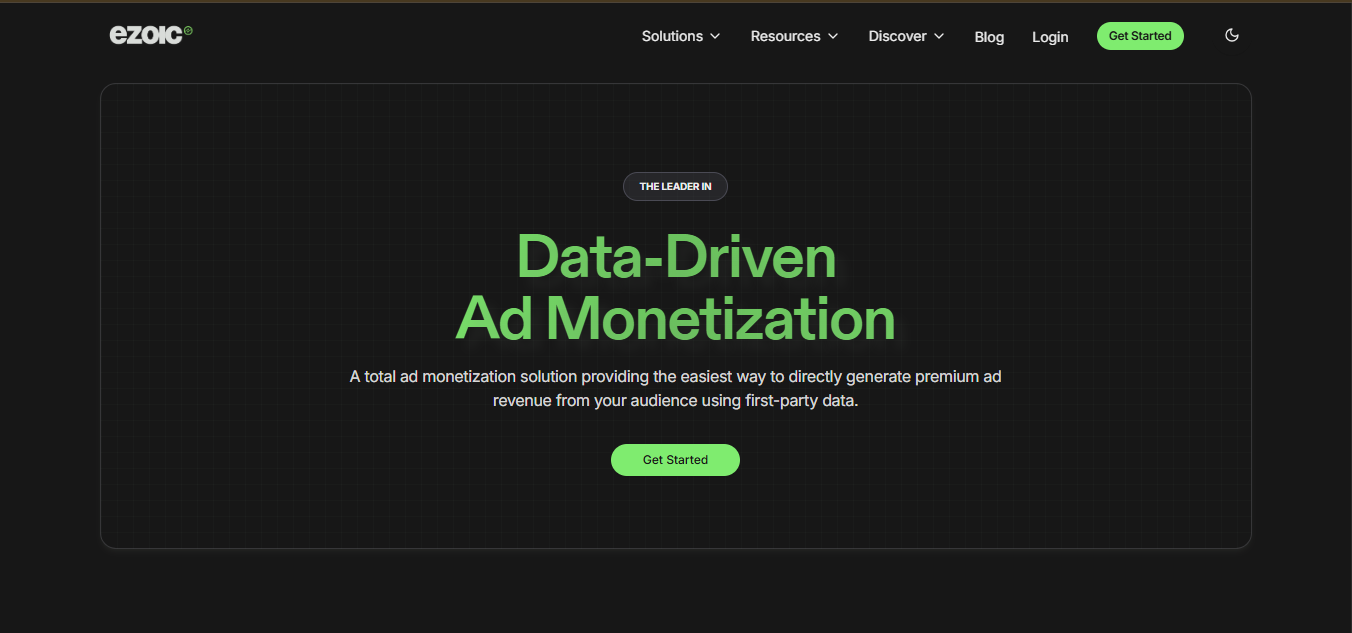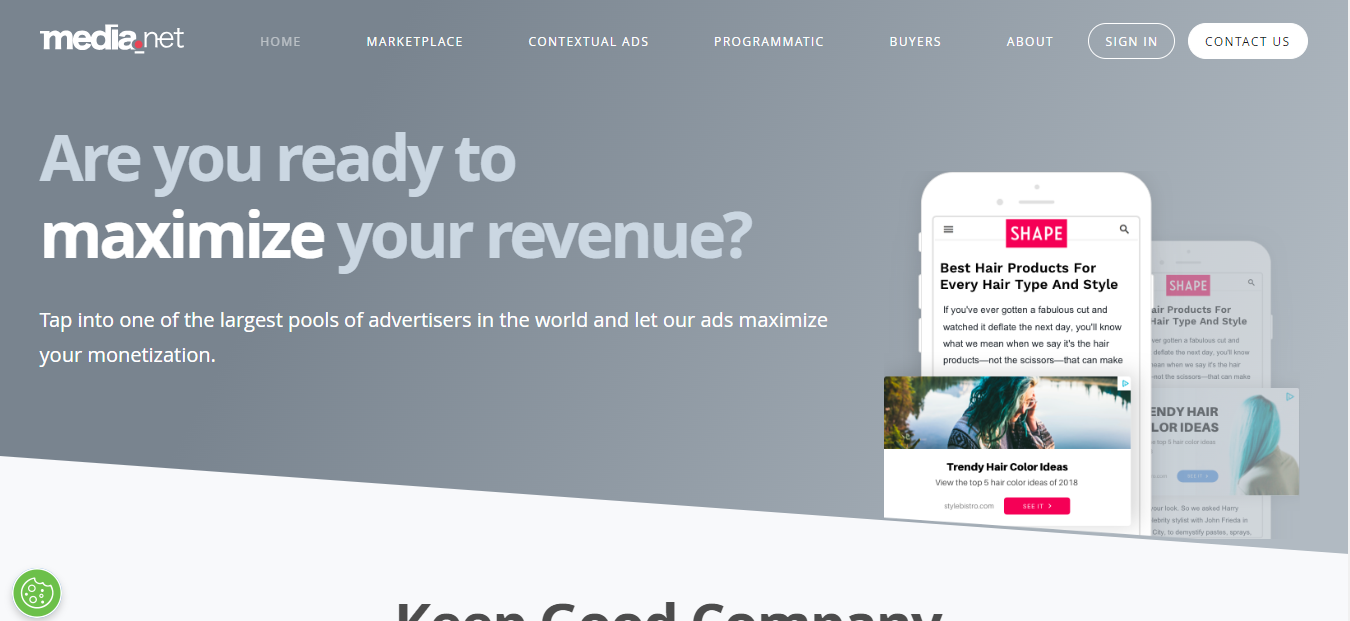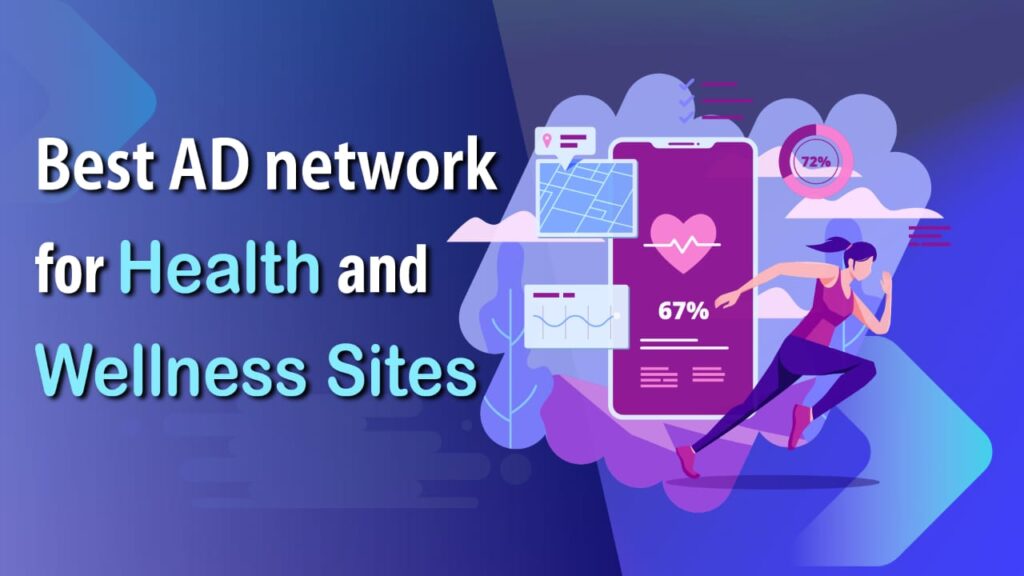Running a small health advice blog can feel like navigating a double-edged sword. On one side, you’re building trust in a space governed by strict credibility standards. On the other hand, your traffic numbers may not yet justify the attention of premium ad networks.
But here’s what most ad revenue guides leave out: you don’t need a massive audience to start earning. What you need is a smart monetization strategy backed by platforms that respect quality content, reader intent, and user trust.
This comprehensive guide explores the best ad networks tailored for low-traffic health and wellness websites. We cover approval requirements, ad types, revenue potential, and user experience considerations. Whether you blog about holistic wellness, gut health, mental clarity, or healthy eating, there’s a network for you.
Why Monetizing Health Blogs Is Different and Riskier
Google classifies health, wellness, and fitness content under its YMYL (Your Money or Your Life) category. This means:
- Content and ads are held to stricter standards.
- Claims must be medically accurate or based on legitimate experience.
- Misleading monetization tactics can backfire and harm SEO or user trust.
Unlike tech or lifestyle blogs, health content must tread carefully around the fine line of ethics, scientific evidence, and user vulnerability. That’s why choosing the right ad network is critical.
Best Ad Networks for Low-Traffic Health Blogs in 2025
Not all ad networks are created equal, especially when your content falls under the sensitive health and wellness category. What works for a lifestyle blog may hurt the trust signals on a wellness site. Below are carefully chosen ad networks that not only accept low-traffic publishers but also support the compliance and content quality needs of health blogs.
- Ezoic
- Media.net
- Google AdSense
- Adsterra
- Monumetric
- PropellerAds
- AdThrive
1. Ezoic — Best All-Rounder for SEO-Driven Health Blogs

Minimum Traffic: None (Access Now program)
Payout Threshold: $20 via PayPal, Payoneer, or bank
Ad Types: Display, sticky, native, video, sidebar anchors
Why It Works:
Ezoic is a Google Certified Publishing Partner that uses AI to test ad layouts, formats, and placements — optimizing for user experience and ad revenue. For health blogs, this matters because Ezoic allows you to control how aggressive your monetization strategy is.
You also get tools like:
- Leap (for Core Web Vitals)
- Privacy compliance support (GDPR, CCPA)
- Revenue vs UX balancing controls
2. Media.net — Best for Contextual Ads on Niche Health Articles

Minimum Traffic: No fixed number (quality-focused)
Payout Threshold: $100 via PayPal or Wire
Ad Types: Contextual text + display ads
Why It Works:
Media.net pulls from Yahoo + Bing ad pools, and their strength lies in contextual targeting — showing relevant health-related ads based on the specific topic of the article.
For example, an article on “Herbal Remedies for Anxiety” may show ads related to wellness apps, herbal brands, or stress-reduction guides.
High relevance = higher click-through + better trust.
No approval if your site lacks structure, grammar, or credibility.
3. Google AdSense — Best for Beginners with Compliant Health Content

Minimum Traffic: None
Payout Threshold: $100 (via bank transfer)
Ad Types: In-content, in-feed, matched content, auto ads
Why It Works:
While AdSense has strict rules around health-related content, it remains the easiest way to get started with monetization. If your articles are medically accurate, well-sourced, and avoid exaggerated claims, AdSense is a solid entry point.
What to keep in mind:
-
Avoid unverified supplements, alternative treatments, or controversial health claims.
-
Stick to educational or experience-based content (e.g., “My PCOS Diet Journey”).
4. Adsterra — Best for Global or Supplement-Linked Health Blogs

Minimum Traffic: None
Payout Threshold: $5 via PayPal, BTC, WebMoney
Ad Types: Native banners, display, in-page push, social bar
Why It Works:
Adsterra offers fast approval and flexible ad formats — making it ideal for international health blogs or those combining content with affiliate offers (e.g., fitness apps, health supplements).
It includes optional pop-unders and interstitials — which can be disabled for cleaner health sites.
5. Monumetric — Best for Blogs with Some Traction (10K+ Monthly Views)

Minimum Traffic: 10,000 monthly pageviews
Payout Threshold: $10 (via PayPal or ACH)
Ad Types: Premium display, carousel, sticky sidebar
Why It Works:
Monumetric provides white-glove onboarding with real human support — helpful if you’re non-tech-savvy but want a custom monetization setup. They’re known to partner with health-conscious advertisers and provide high RPMs compared to AdSense.
Requires a one-time $99 setup fee if you’re under 80K pageviews/month.
6. PropellerAds — Best for Mobile-First Health Content

Minimum Traffic: None
Payout Threshold: $5
Ad Types: In-page push, smart banners, interstitials
Why It Works:
If your blog’s audience is mobile-heavy — think TikTok-driven traffic, Pinterest pins, or WhatsApp shares — PropellerAds’ in-page push ads can be a non-intrusive, high-CTR option.
Their Smart Banners also work well with content on skincare, weight loss routines, or intermittent fasting — areas where micro-conversions are common.
7. AdThrive — Best for Authority Health Sites (100K+ Monthly Views)

Minimum Traffic: 100,000 pageviews/month
Payout Threshold: $50
Ad Types: Premium display, video, custom placements
Why It Works:
AdThrive is the gold standard, offering extremely high RPMs and deep advertiser relationships. If your site has medical expert authorship, strong SEO, and trust signals, AdThrive can bring in 4–10x higher earnings than beginner networks.
Their requirements are strict — you’ll need:
-
Google Analytics installed
-
Majority US traffic
-
High-quality, original, and compliant content
Strategic Tips for Monetizing a Small Health Blog
1. Pair Ads with Affiliate Offers (Apps, Programs, Supplements)
Why It Matters:
Display ads alone (especially on low-traffic sites) usually offer limited earnings. By combining ads with contextually relevant affiliate links, you create multiple income streams — without overwhelming the reader.
Example Use Cases:
-
A blog post about “Best Exercises for Back Pain” can link to:
-
A posture correction app (affiliate link)
-
A foam roller from Amazon (ad + affiliate)
-
-
A nutrition article about “Gut Health” can promote:
-
A probiotic supplement via ShareASale, Impact, or Awin
-
2. Use Schema Markup (HowTo, FAQ) to Drive Organic CTR
Why It Matters:
Schema markup helps search engines understand your content type. In health niches, this is critical to:
-
Show your content as rich snippets on Google (e.g., step-by-step guides or FAQs)
-
Improve click-through rates (CTR)
-
Stand out in competitive SERPs like “natural ways to lower cholesterol”
Examples of Useful Schema Types:
-
FAQ Schema: For blogs that answer common wellness questions (e.g., “Can yoga improve sleep?”)
-
HowTo Schema: For posts like “How to Start a 7-Day Juice Cleanse”
-
Article Schema: To help Google see you as an authority site
Tools to Add Schema Easily:
-
WordPress: Use Rank Math, Yoast, or Schema Pro
-
Manual JSON-LD: Use Google’s Rich Results Test to verify
3. Avoid Misleading Claims or “Cure” Content
Why It Matters:
Health content is considered YMYL (Your Money or Your Life) under Google’s content quality guidelines. If you publish exaggerated, unproven, or clickbait health claims, it:
-
Hurts your SEO rankings
-
May get your site banned from Google AdSense or Ezoic
-
Reduces user trust and engagement
Examples to Avoid:
-
Cure Diabetes in 7 Days Naturally
-
Lose 30 Pounds Overnight Without Exercise
Instead, use:
-
Natural Ways to Support Blood Sugar Management
-
Science-Backed Weight Loss Habits That Actually Work
4. Run Content Audits to Improve Trust Signals Before Applying
Why It Matters:
Before applying to high-quality ad networks like Media.net, Monumetric, or Ezoic, you need to make sure your content meets their trust and quality standards.
What to Check in a Content Audit:
-
Are all blog posts original, well-formatted, and grammar-checked?
-
Do articles include sources or expert quotes?
-
Are your About, Contact, and Privacy Policy pages clearly visible?
-
Is the site HTTPS secured?
-
Is the author bio included? (especially if giving medical or mental health advice)
Tools to Help Audit:
-
Grammarly or Hemingway for grammar & clarity
-
Google Search Console for indexing & crawl errors
-
Ezoic’s Site Scorecard (post-approval) for UX metrics
5. Prioritize UX — Aggressive Ads Damage Trust in Health Niches
Why It Matters:
Health blog visitors are often vulnerable and looking for genuine help. Overloading pages with pop-ups, auto-playing videos, or sticky ads ruins credibility and can increase bounce rates and lower revenue.
Best UX Practices for Health Blogs:
-
Use clean, white-space-heavy layouts
-
Place ads after the first paragraph, mid-content, and at the end — not before the headline
-
Avoid pop-unders, forced redirects, or unrelated product offers
-
Ensure mobile UX is fluid (since most wellness readers browse via phone)
Tools to Measure UX:
-
Core Web Vitals (via PageSpeed Insights or Ezoic’s LEAP)
-
Hotjar or Microsoft Clarity to watch user behavior
-
A/B testing inside ad platforms to compare layout performance
Final Verdict: Monetizing Low-Traffic Health Blogs is Possible — With the Right Strategy
Monetizing a small health blog used to be a waiting game — but not anymore. Today’s ad tech landscape offers several networks that welcome low-traffic, high-quality sites, especially in the health, wellness, and mental clarity niches.
Small health blogs can generate revenue, but only if they approach monetization ethically and strategically. Choose ad networks that respect the reader’s experience and comply with health standards.
Start with Ezoic or Media.net. Grow into Monumetric. Aim for AdThrive. And never sacrifice trust for short-term gains.

